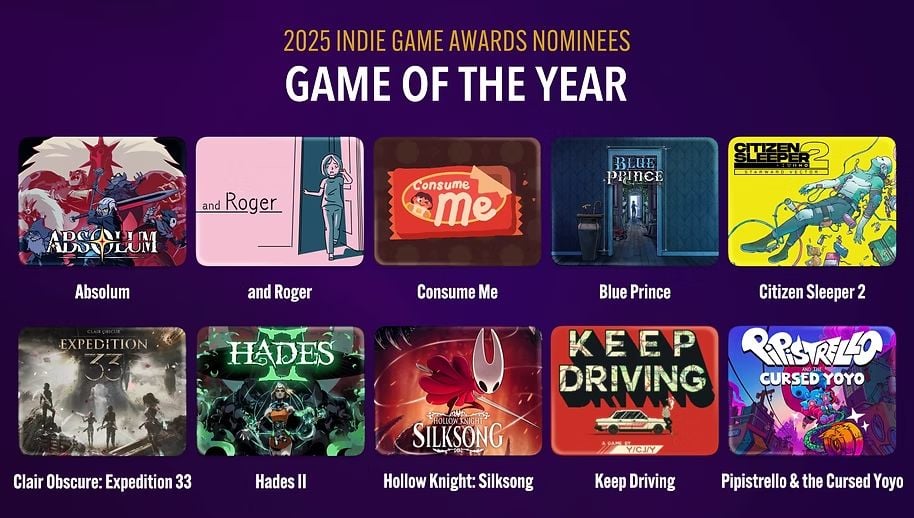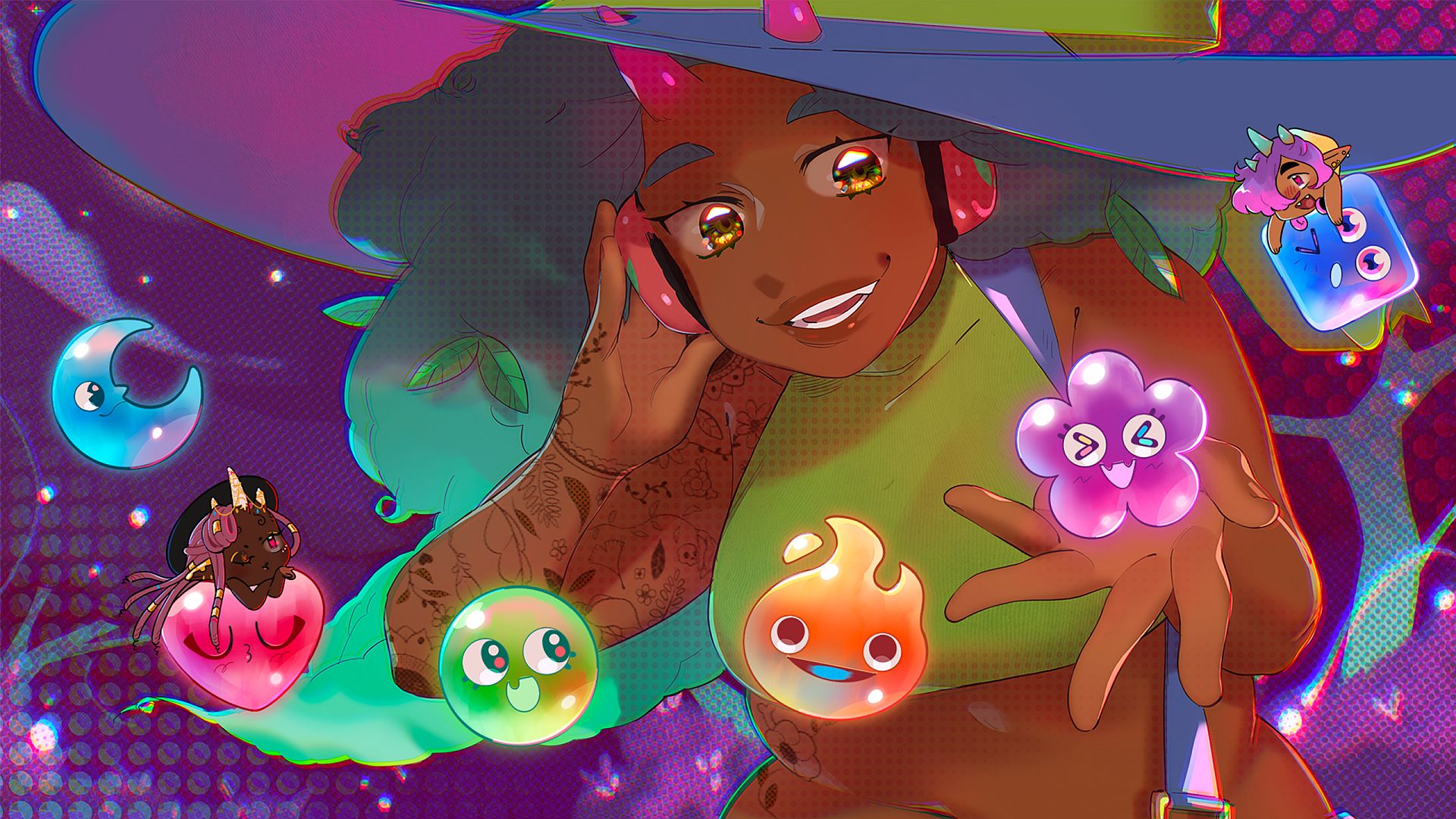
There’s Just No Way Expedition 33 Should Be Up For Indie Awards
The perennial discussion of what constitutes an indie game is both tired and tiring. It’s a term that, in the end, no longer means anything at all, and as such the fights over what is allowed to call itself one are mostly futile. It’s best just left alone. But then along come the annual awards reserved specifically for whatever an indie game actually is, and suddenly the whole contentious topic is thrown into a harsh light, along with which comes a realization: We may not be able to say what an indie game is, but we can sure say what it isn’t. And that would include a multi-million dollar game made by hundreds of people.
Yesterday the excellent Indie Game Awards announced their lists of finalists. It’s a fantastic ceremony that not only champions the very best in indie gaming, but also shines lights on minority developers, highlights the work of solo devs, and pushes for greater accessibility in video games. It’s also now in the awkward situation of having a grand prize category that is pitching the five-person-created Consume Me against the behemoth of Clair Obscur: Expedition 33. So yeah, we’re having that argument again.

Of course, the simplest answer to the question, “What is an indie game?” would be, “Duh, it’s an independent game. A game without a publisher.” And for a while, that was certainly what it meant. But not any more.
In the music industry in the 1990s, “indie” irreversibly went from meaning an album or single not published by a major record label to a genre of music. So-called “independent” labels grew enormously successful from their bands becoming mainstream, and many were bought up by the big five (at the time) majors, while the listening audience absolutely didn’t care one iota about any of it. They just liked the music. And as a result, “indie music” went from distinction to vibe. Almost the same process has occurred in video games, albeit 20 years later.
There was a brief window, in the late 2000s, when “indie games” were very definitely a specific thing. Digital publishing suddenly made it possible to distribute a game without going through a publisher, and better development tools meant small teams or individuals were able to create impressive games. But when I name an excellent example of such an indie game, you might detect the beginnings of the problem: Minecraft.
As “indie gaming” became a phenomenon, publishers sprung up and swooped in. There was a lot of money in those hills, and there were people who could help solo and small-team developers find the finances they needed to get games across the line, as well as hooking them up with distribution to digital stores, marketing, and PR. The games were still created in the same way, by the same numbers of people, with the same vibes, but so often now had a very not-independent structure around them. At the same time, others just uploaded their scrappy project to Steam and hoped, and a few caught on fire, went massive, got rich. They were all received as “indie games.” And oftentimes the genuinely independent developers would then become the publishers for the next generation, using their recent success, contacts, and finances to try to provide similar opportunities for others. They’d pushed on those heavy doors, and now wanted to hold it open for others. Which is brilliant! But it also helped the term “indie” make less and less sense.
As I said at the start, for the majority of the time this is all semantics. For the average person playing the games, it just isn’t important. (Yes, you might care, but I said the average person.) Whether the roguelite deckbuilder RPG you’re playing was made by a team of two, or a team of 200, matters very little when you’re sitting on your couch having a great time. But that distinction, the ambiguity of the term, does suddenly start to matter very much when it comes to handing out awards.
No, I totally agree, rewards and awards and award ceremonies are generally a bane on existence, where the already most successful products get given prizes for having already succeeded, while incredible achievements that went unrecognized remain just as obscure. It sucks, I hate it, destroy them all. But when it comes to indie gaming awards I have a different perspective, because at their very best they can bring unknown games alongside the year’s breakthrough successes, the latter helping bring eyes to the former. Events like the IGFs at GDC and the IGAs do wonders for bringing attention to those who have so far gone unnoticed, pushing tiny, peculiar games into the limelight. This not only benefits those games, their developers, and the people who end up enjoying them, but also wider gaming itself, as their oddities and nuances influence others and expand people’s scope for what games can be. It’s all brilliant! Unless, of course, a multi-million-dollar game sneaks its way in on a technicality and pushes the less known games out of the way.
Clair Obscur: Expedition 33‘s budget is not certain, but various informed estimates put it between $15 and $25 million, likely toward the higher end. While the core team at Sandfall is relatively small, 30 or 40 people, it was a game whose leadership hired literally hundreds of contractors to work on it too. And I do not believe that anyone who is applying reasonable thought could consider this to be what is understood as an “indie game.” Let alone when it has a publisher! An “indie publisher,” yes, although god, we haven’t even gotten into what that’s supposed to mean. So while I cannot usefully describe to you the parameters of what constitutes an indie game in 2025, I can absolutely tell when something isn’t it.
There used to be a widely accepted term for a game like this. “AA.” Double-A games were those that essentially fell in the middle between an indie game as it’s understood, and a AAA big-budget game published by the likes of Ubisoft, EA or Activision. Again, there’s no sharply defined line to be drawn in the sand, but it sure helped to have the “AA” category there to stop games that cost less than $300 million from claiming to be indie. Expedition 33 is the platonic AA game. It had a multi-million dollar budget and a core team counted in tens and not ones, but wasn’t on the scale of some of its big-name rivals. And there I’m being fairly generous, given that the number of names on the credits absolutely does match that of plenty of EA games.
So then, given all of this, how on Earth does a game like Expedition 33 end up appearing in indie game awards? Well, to give the quick answer, it’s by entering itself on a technicality and hoping to get away with it. But for a more complicated answer, I reached out to the organizers of the IGAs to find out from them.
“As you might suspect,” says Mike Towndrow, creative director at organizers Six One Indie Showcase, “it’s been an ongoing (and sometimes painful, haha) conversation with the curation jury since launch.”
The world of indie publishing, as oxymoronic a term as that might seem, is fraught for awards shows, and it’s because of this complete lack of lines in the sand. Instead, it’s just one big, confusing beach. For instance, when is a self-described indie publisher no longer indie itself? “There were a few more literal-leaning factors that went into the decision,” says Towndrow, beginning with the sudden explosive success of Expedition 33‘s publisher, Kepler—the same group had Pacific Drive win best music at last year’s IGAs. Then throw in, as Towndrow continues, “publishers like Devolver (especially being publicly traded) and Annapurna having a heftier financial backing but still widely considered indie.” Heck, he notes, if it’s about the amount of money, then what about Hollow Knight: Silksong? “The original game became a major financial success and comfortably funded the sequel.”
So what to do? “When grey-area situations like this come up,” Towndrow continues, “we ultimately reference our personal definition of ‘indie’: While the ‘what is an indie game?’ question can be interpreted in thousands of ways, the definition we tend to rely on is a developer having the independent freedom to create in an unrestricted environment and fully swing for the fences in realizing their vision. Despite the successful capital that was raised, we ultimately felt CO: E33 fits that core definition.”
It is, in fairness, a definition that more closely aligns to a concept of “independence,” even if it’s yet another different interpretation of the term. But of course it neither matches in the sense of being independently published, nor from a small team. It’s also not clear how this notion of freedom can be determined given Kepler’s involvement and the scale of the finances and logistics. However, while acknowledging that any system is imperfect, Towndrow makes clear the Indie Game Awards also have other measures in place to try to balance out these situations.
“We have a rule that each game can only be nominated for one of the general categories,” says the organizer, stressing that this is especially true for the “massive” games. “It helps give a wider range of indies the visibility they deserve without seeing Silksong, Hades, and CO: E33 dominating across the board.”
By “general categories,” Towndrow means those like Bite-Sized Game, Debut Game, Emotional Impact, Gameplay Design, Innovation, Music, Narrative, Solo Development and Visual Design. Of course many games will be deserving of selection across multiple categories, but designing the awards this way ensures you don’t end up in that awkward situation in which GDC’s Independent Game Festival Awards so often do, where one super-popular title sweeps the board. Here, far more games will get recognition. However, there are other categories in which games can receive another nomination, such as Achievement in Accessibility, Black Voices In Gaming, Community Management, Women-Led Indie Gaming, the various regional awards, and of course the Game of the Year.
So yes, Silksong, Expedition 33 and Hades II do all appear, but outside of the grand prize, just the one other time. (And I should add, many of the selections around them are stunning.) Of course, all of this will get lost in the noise should any of them win that GOTY prize.

Is there a useful conclusion to be drawn? If there is, the industry doesn’t look close to finding it. Having regularly been a first-round judge in the IGFs for many years, playing as many entries as I can from the hundreds that are submitted each time, I am very aware that this debate happens every single year. There’s always at least one game that’s entered that causes a mass argument, with half the commenting judges pointing out it just shouldn’t be there given how far removed it is from any understanding of “indie game,” and the other half saying they’re nominating it for every category because they loved it so much. Given I’m always marking arguments for the first group, I find the latter utterly infuriating. As I said in one such judging discussion, “I may love a grizzly bear, but would still suggest it shouldn’t be entered into the Westminster Kennel Club Dog Show.”
My personal take is that the onus is on the developers to make the right choice. If your multi-million-dollar game with hundreds of names on the credits can somehow get into a competition aimed at small indie developers on a technicality, then, you know, maybe sit this one out? Let the massive success and industry-wide adulation and vast numbers of players and mainstream award nominations be enough for you, and seriously, don’t risk the possibility of taking away awards, attention, and possibly an entire future career from a solo dev with a wicked-good game. And yes, obviously I’m talking about Expedition 33 especially here, but I’d go further and even say the same of Team Cherry and Supergiant, let alone all future examples of developers operating from the advantage of earlier massive success or substantial resources they’ve gained as a result of such success. Their teams may be small (Team Cherry is said to be well under 15, with a core of just three people), but their games are colossally lucrative, bringing in tens of millions of dollars (if not more), and will of course be nominated for (and likely win) multiple mainstream awards when they’re up against the likes of Ubisoft and Activision. I find it hard to perceive their entering themselves for these ceremonies (or agreeing to be nominated) as anything other than some giant hulking brute entering an under-10s weightlifting contest on the technicality that their birthday was February 29.
With this approach, instead of forcing indie awards and organizations to have to justify themselves in impossible situations, developers (and publishers) can instead make the plainly right choice. In fact, they could go a lot further and insist they not be included and instead dedicate their time to being a judge for these awards, helping pull others up behind them. They could sponsor the awards if they want their game’s name out there so badly! Given that there just isn’t a useful definition of “indie,” but there is a commonly understood vibe for what is intended by its use in these contexts, it’s the logical way to go. Because, as I said at the start, we might not be able to definitively say what an indie game is, but if we’re all honest and decent, we can easily say what one is not.






